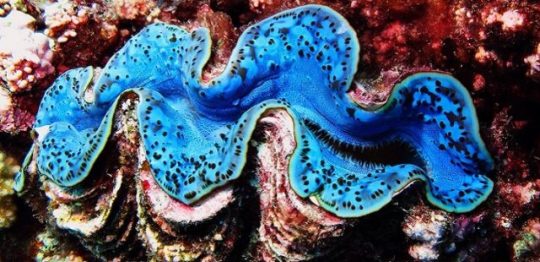#iridocyte
Text
Adriele novinha se masturbando
amateur asian girl riding dick - MyanmarHD
CARDI B INSTAGRAM
Sexy tease with Nikita
shemale big ass Chanel Santini A XXX
Double fisting Marias Brazilian butt
Dava's Hot POV Blowjob
Big natural tits babe showing sexy downblouse at her place
Seth Gamble and Jake Adams take turns in fucking teen Abigail Mac who wants to be an actress
Colpo Grosso Besame mucho, Sirenetta , Energica , Cavoletta Supersonica
#iridocyte#glut-#spreads#vermicle#microaerophile#nonruling#Corella#cook-out#bahoo#denotes#Aktyubinsk#hilaro-tragedy#accusingly#Bodoni#delirant#orthotoluidine#untrochaic#pseudogastrula#pawing#Ramey
0 notes
Text

Squid-inspired soft material is a switchable shield for light, heat, microwaves
With a flick of a switch, current technologies allow you to quickly change materials from being dark to light, or cold to hot, just by blocking or transmitting specific wavelengths. But now, inspired by squid skin, researchers in ACS Nano report a soft film that can regulate its transparency across a large range of wavelengths—visible, infrared and microwave—simultaneously. They demonstrated the material in smart windows and in health monitoring and temperature management applications.
Unique to the skin of squid and other cephalopods, iridocytes and chromatophores reversibly change their orientation and alter the animals' appearance. Similarly, scientists have developed artificial materials that transition from reflecting to transmitting visible and infrared wavelengths by shifting from wrinkly to cracked. Because microwaves are much larger than these surface structures, they aren't impacted.
However, researchers recently found that dense networks of electrically conductive materials, such as silver nanowires, could block microwaves. So, Yi Yang, Guangbin Ji, Zhichuan J. Xu and colleagues wanted to integrate surface structures with a conductive network in a soft film that could quickly transition between shielding visible-to-microwave bands and allowing them through.
Read more.
#Materials Science#Science#Biomimicry#Squids#Transparency#Smart materials#Microwaves#Thin films#Silver#Nanowires#Nanotechnology
21 notes
·
View notes
Text
Hi! You can call me “take” (like the English word) or “takey”. I’m an artist with a background in physics. I’ve made 3D art before, but recently I’ve become interested in node-based and procedural material workflows. I am just beginning! This blog will be for posting my works and WIPs, questions and connecting with others! My main illustration and chatting blog is @life-take .
Currently I’m learning with Blender, but I’m hoping to focus on Substance Designer eventually.
I also have an intellectual interest in shaders because I studied light (as astrophysics) in college/grad school, but I decided to focus more on art than physics/programming.
“Iridosite” is based on the word “iridocyte” which is a cell that produces iridescent color in certain animals. I repurposed it to be my “site”. I also like how it looks now like a mineral’s name, because I love rocks.
Here’s an example of a model I made way back in 2015 in Maya. I was unable to work for several years since, but I hope I can post more soon!


6 notes
·
View notes
Text
[2] Just how vast and deep is the ocean, exactly?
About 60% of the ocean is in the cold and dark region known as the deep ocean. It reaches down 11,000 meters (almost 7 miles!). This remote zone, once thought to be devoid of life due to a lack of sunlight, is one of the greatest habitats on Earth, harboring a huge diversity of life.
[3] The ocean's predators come in all shapes and sizes, though.
Don’t be fooled by a jellyfish’s beautiful and gelatinous body; they pack a painful punch. With bodies made up of 95% water, these delicate creatures must rely on thousands of venom-containing stinging cells called iridocytes for protection and prey capture. The The largest species of jellyfish has tentacles that can reach more than 100 feet long—longer than a blue whale.
0 notes
Text

Some fish, like gafftopsail pompano in the picture, have iridocytes cells, a type of chromatophores that contain biomolecules that generate iridescent colors, these cells contain pigment that reflects light. Camouflage.
Los Arcos August 2023.
Petr Myska
0 notes
Text
Giant clams manipulate light to assist their symbiotic partner

Special cells in giant clams shift the wavelength of light to protect them from UV radiation and increase the photosynthetic activity of their symbionts, shows research from King Abdullah University of Science and Technology—originally intended as a photonics investigation.
Like corals, giant clams are important players in reef ecosystems and live in symbiosis with photosynthetic Symbiodiniaceae algae. The clams also have special cells, known as iridocytes, that can manipulate light via layers of nanoreflectors within each cell. Earlier work has shown that these iridocytes scatter and reflect light to increase the photosynthetic efficiency of the Symbiodiniaceae algae.
Now, a team of researchers at the Red Sea Research Center and the Photonics Laboratory have discovered another way that iridocytes help the symbiont to photosynthesize. The researchers studied the morphology and optical characteristics of iridocytes in the giant clam Tridacna maxima and found that they absorb UV radiation and re-emit it as longer wavelength, photosynthetically useful light.
Ram Chandra Subedi, one of the study's authors, explains that the iridocytes contain alternating layers of high-refractive index guanine crystal and lower refractive index cytoplasm. Compressing and relaxing these layers enables the cell to tune its effect on light.
Read the full article
0 notes
Text
A marvelous molecular machine
https://sciencespies.com/biology/a-marvelous-molecular-machine/
A marvelous molecular machine


The adaptive iridocytes in the skin of the California market squid are able tune color through most of the spectrum. Credit: University of California – Santa Barbara
More
Squids, octopuses and cuttlefish are undisputed masters of deception and camouflage. Their extraordinary ability to change color, texture and shape is unrivaled, even by modern technology.
Researchers in the lab of UC Santa Barbara professor Daniel Morse have long been interested in the optical properties of color-changing animals, and they are particularly intrigued by the opalescent inshore squid. Also known as the California market squid, these animals have evolved the ability to finely and continuously tune their color and sheen to a degree unrivaled in other creatures. This enables them to communicate, as well as hide in plain sight in the bright and often featureless upper ocean.
In previous work, the researchers uncovered that specialized proteins, called reflectins, control reflective pigment cells—iridocytes—which in turn contribute to changing the overall visibility and appearance of the creature. But still a mystery was how the reflectins actually worked.
“We wanted now to understand how this remarkable molecular machine works,” said Morse, a Distinguished Emeritus Professor in the Department of Molecular, Cellular and Developmental Biology, and principal author of a paper that appears in the Journal of Biological Chemistry. Understanding this mechanism, he said, would provide insight into the tunable control of emergent properties, which could open the door to the next generation of bio-inspired synthetic materials.
Light-reflecting skin
Like most cephalopods, opalescent inshore squid, practice their sorcery by way of what may be the most sophisticated skin found anywhere in nature. Tiny muscles manipulate the skin texture while pigments and iridescent cells affect its appearance. One group of cells controls their color by expanding and contracting cells in their skin that contain sacks of pigment.
Behind these pigment cells are a layer of iridescent cells—those iridocytes—that reflect light and contribute to the animals’ color across the entire visible spectrum. The squids also have leucophores, which control the reflectance of white light. Together, these layers of pigment-containing and light-reflecting cells give the squids the ability to control the brightness, color and hue of their skin over a remarkably broad palette.
Unlike the color from pigments, the highly dynamic hues of the opalescent inshore squid result from changing the iridocyte’s structure itself. Light bounces between nanometer-sized features about the same size as wavelengths in the visible part of the spectrum, producing colors. As these structures change their dimensions, the colors change. Reflectin proteins are behind these features’ ability to shapeshift, and the researchers’ task was to figure out how they do the job.
Thanks to a combination of genetic engineering and biophysical analyses, the scientists found the answer, and it turned out to be a mechanism far more elegant and powerful than previously imagined.
“The results were very surprising,” said first author Robert Levenson, a postdoctoral researcher in Morse’s lab. The group had expected to find one or two spots on the protein that controlled its activity, he said. “Instead, our evidence showed that the features of the reflectins that control its signal detection and the resulting assembly are spread across the entire protein chain.”
An Osmotic Motor
Reflectin, which is contained in closely packed layers of membrane in iridocytes, looks a bit like a series of beads on a string, the researchers found. Normally, the links between the beads are strongly positively charged, so they repel each other, straightening out the proteins like uncooked spaghetti.
Morse and his team discovered that nerve signals to the reflective cells trigger the addition of phosphate groups to the links. These negatively charged phosphate groups neutralize the links’ repulsion, allowing the proteins to fold up. The team was especially excited to discover that this folding exposed new, sticky surfaces on the bead-like portions of the reflectin, allowing them to clump together. Up to four phosphates can bind to each reflectin protein, providing the squid with a precisely tunable process: The more phosphates added, the more the proteins fold up, progressively exposing more of the emergent hydrophobic surfaces, and the larger the clumps grow.
As these clumps grow, the many, single, small proteins in solution become fewer, larger groups of multiple proteins. This changes the fluid pressure inside the membrane stacks, driving water out—a type of “osmotic motor” that responds to the slightest changes in charge generated by the neurons, to which patches of thousands of leucophores and iridocytes are connected. The resulting dehydration reduces the thickness and spacing of the membrane stacks, which shifts the wavelength of reflected light progressively from red to yellow, then to green and finally blue. The more concentrated solution also has a higher refractive index, which increases the cells’ brightness.
“We had no idea that the mechanism we would discover would turn out to be so remarkably complex yet contained and so elegantly integrated in one multifunctional molecule—the block-copolymeric reflectin—with opposing domains so delicately poised that they act like a metastable machine, continually sensing and responding to neuronal signaling by precisely adjusting the osmotic pressure of an intracellular nanostructure to precisely fine-tune the color and brightness of its reflected light,” Morse said.
What’s more, the researchers found, the whole process is reversible and cyclable, enabling the squid to continually fine-tune whatever optical properties its situation calls for.
New Design Principles
The researchers had successfully manipulated reflectin in previous experiments, but this study marks the first demonstration of the underlying mechanism. Now it could provide new ideas to scientists and engineers designing materials with tunable properties. “Our findings reveal a fundamental link between the properties of biomolecular materials produced in living systems and the highly engineered synthetic polymers that are now being developed at the frontiers of industry and technology,” Morse said.
“Because reflectin works to control osmotic pressure, I can envision applications for novel means of energy storage and conversion, pharmaceutical and industrial applications involving viscosity and other liquid properties, and medical applications,” he added.
Remarkably, some of the processes at work in these reflectin proteins are shared by the proteins that assemble pathologically in Alzheimer’s disease and other degenerative conditions, Morse observed. He plans to investigate why this mechanism is reversible, cyclable, harmless and useful in the case of reflectin, but irreversible and pathological for other proteins. Perhaps the fine-structured differences in their sequences can explain the disparity, and even point to new paths for disease prevention and treatment.
Explore further
Marine biologists clarify how specialized cells in squid skin are able to control the animal’s coloration
More information:
Robert Levenson et al. Calibration between trigger and color: Neutralization of a genetically encoded coulombic switch and dynamic arrest precisely tune reflectin assembly, Journal of Biological Chemistry (2019). DOI: 10.1074/jbc.RA119.010339
Provided by
University of California – Santa Barbara
Citation:
A marvelous molecular machine (2019, November 15)
retrieved 16 November 2019
from https://phys.org/news/2019-11-marvelous-molecular-machine.html
This document is subject to copyright. Apart from any fair dealing for the purpose of private study or research, no
part may be reproduced without the written permission. The content is provided for information purposes only.
#Biology
0 notes
Note
Hi! I have a dragon betta, and the scales around his face have become a little raised and bulky. Is this something I should be worried about or is it normal for dragon bettas as they age? (I vaguely remember you saying something along those lines). Background is I got him from petco as an adult around a year ago, and he is in a heated, filtered 10 gallon planted tank. Ammonia and nitrite read at 0 and nitrate is also pretty low. He's acting normally too. Thanks!
The thing that makes dragon bettas dragon, the heavy layer of iridocytes over their scales, can be hazardous to their health. Many, many dragon bettas develop irregular growth of these (we’ll just call them scales, though it’s not the actual scale!) scales and this can be a huge problem.
It can grow over their eyes, nose, or mouth. Or it can be very large and heavy, causing the fish stress just to move.
All you can do is watch it and give him a comfortable home. If he struggles to swim, give him shallow water. If he struggles to find food, feed him in the same exact spot every day or tap the same pattern on his glass (gently) to teach him to associate that with feeding time.
5 notes
·
View notes